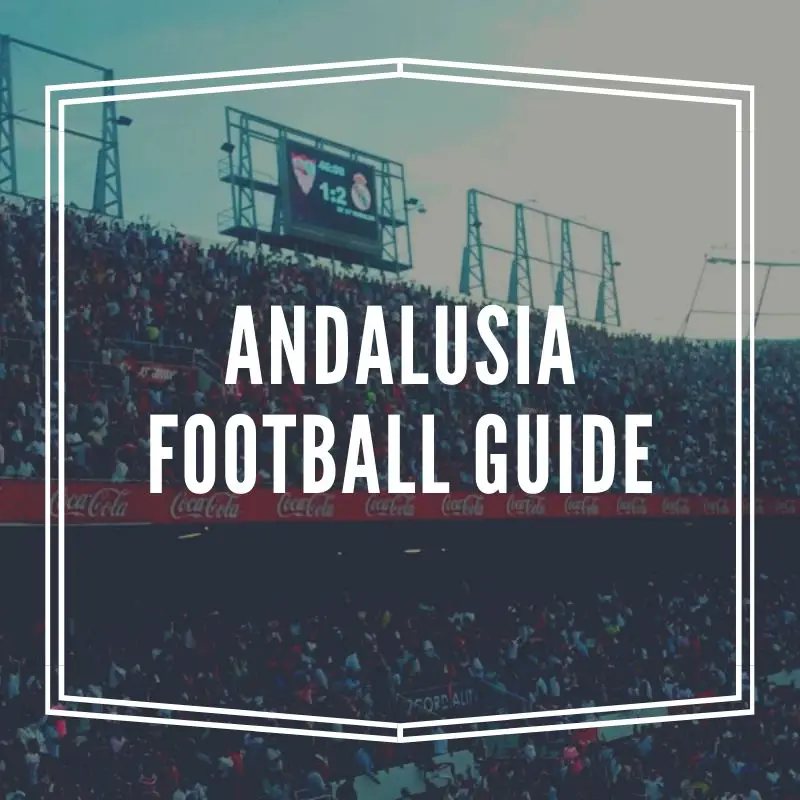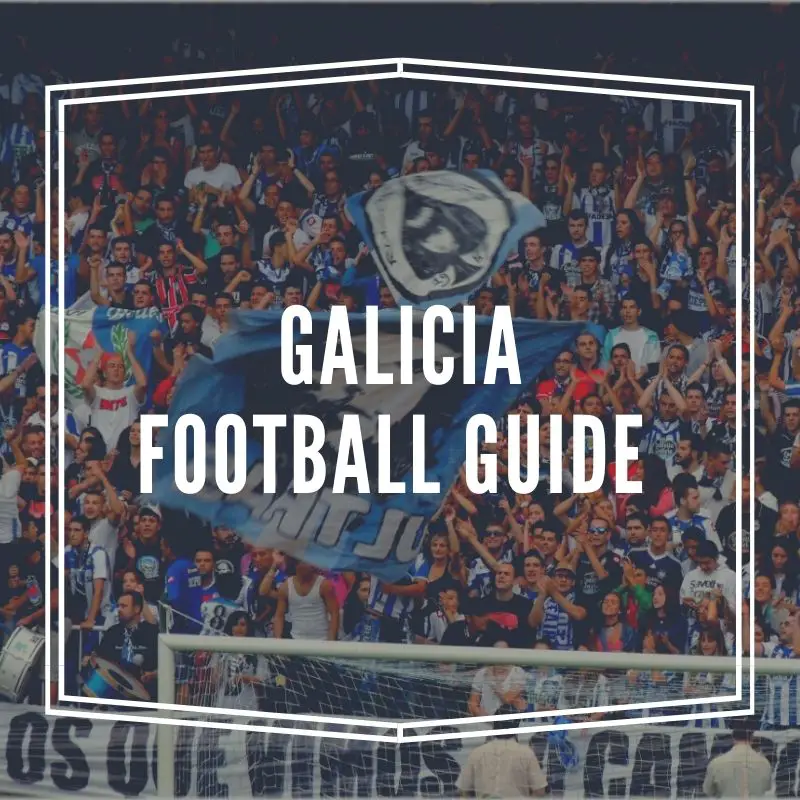Welcome to our Spanish football regional guides section. Starting with the country’s biggest football hotbeds, we will hop around Spain’s many diverse regions and bring you the lowdown on football in each one. The guides will feature info on all the major football clubs in Spain, as well as plenty of smaller ones, with tips for getting around, how to buy tickets and things to do away from the pitch on a Spain football trip.
The league listings on this page have been fully updated for the 2025/26 season and feature all the Spanish football clubs in the top three tiers – LaLiga, the Segunda Division and the Primera Federacion which is split into two 20-team regionalised sections.
We also have a separate piece on the biggest Spanish football rivalries which explores some of the most passionate local derbies and feistiest clashes around the country.
Football clubs in Spain (2025/26) – Regional guides
Madrid
Madrid is not just the capital of Spain, but it has been described as the capital of European football in recent years with Atleti rising to become a genuine continental force alongside neighbours and 15-times European champions Real Madrid, arguably the biggest club in world football. There’s plenty going on away from the big two though, with a trip to Vallecas to see barrio boys Rayoa popular with visitors to the city, while you can also catch a game in the South Madrid commuter towns of Getafe, Leganes and Alcorcon.
The Madrid clubs
LaLiga: Real Madrid, Atletico Madrid, Getafe, Rayo Vallecano
Segunda: Leganes
Primera Federacion: Alcorcon, Atletico Madrid B, Real Madrid B

Catalunya
FC Barcelona may be the symbol of Catalan football and in many ways the symbol of Catalunya, but there are a host of smaller clubs in the region too. Girona stunned everyone with a 3rd-place finish in LaLiga 2023/24, while Espanyol are also in the top flight. You can also catch third-tier action in the province of Barcelona with Europa and Sabadell, while Gimnastic Tarragona are historically perhaps the third biggest Catalan club behind Barca and Espanyol.
The Catalan clubs
LaLiga: Barcelona, Girona, Espanyol
Segunda: –
Primera Federacion: Gimnastic Tarragona, Europa, Sabadell

Basque Country
In many respects, the real birthplace of football in Spain, the Basque Country and its clubs were instrumental in the emergence of the sport in the early 20th Century. Despite occupying less than 1.5% of all Spanish territory, the tiny Basque autonomous region continues to punch well above its weight to this day with three clubs on the LaLiga 2025/26 map, some of the best academies in Spain and a stubborn determination to continue doing things their own way.
The Basque clubs
LaLiga: Athletic Club, Real Sociedad, Alaves
Segunda: Eibar, Real Sociedad B
Primera Federacion: Arenas, Barakaldo, Athletic Club B

Andalusia
Spain’s most populous region is home to more clubs in the top three tiers than any other. The Andalusian capital hosts Spain’s fiercest city derby with Real Betis and Sevilla fighting to be the pride of Seville. Malaga are often viewed as the other “big” Andalusian club but have fallen on hard times in recent years, while Cadiz, Granada and Almeria all suffered relegation from the top flight in 2024 and none were able to bounce back at the first attempt. Further down the pyramid, visitors to the Costa del Sol can catch third-tier football in 2025/26 in the resorts of Marbella and Torremolinos.
The Andalusian clubs
LaLiga: Real Betis, Sevilla
Segunda: Almeria, Cadiz, Granada, Malaga, Cordoba
Primera Federacion: Antequera, Algeciras, Atletico Sanluqueño, Marbella, Juventud de Torremolinos, Betis B, Sevilla B

Valencian Community
The Valencian Community is another major part of the Spanish football map. Valencia CF are the traditional main force, but Villarreal have risen to become a big player, not just in the region, but in Spain and at times Europe in recent years. Following the promotions of Levante and Elche, the Valencian region will be home to 20% of the clubs in LaLiga 2025/26, making this a great time to plan a football trip to this part of the country.
The Valencian clubs
LaLiga: Valencia, Villarreal, Levante, Elche
Segunda: Castellon
Primera Federacion: Eldense, Hercules, Villarreal B

Galicia
Tucked away in the northwest corner of Spain, Galicia is a coastal region with a complex history, Celtic heritage and a unique relationship with the sea. The Galician Community is home to several football clubs that are located right on the coast including beach-side Deportivo La Coruña, the only team from the region to have won a major trophy. It’s Celta Vigo that have featured in more top-flight seasons though and both sides compete for the right to be the pride of Galicia.
The Galician clubs
LaLiga: Celta Vigo
Segunda: Deportivo La Coruña
Primera Federacion: Racing Ferrol, Ourense, Lugo, Arenteiro, Pontevedra, Celta Vigo B

Asturias
This cider-loving region of northern Spain is home to all kinds of unique cultural quirks, as well as some of the most dramatic scenery in all of Iberia. Its two main cities (which are separated by just 30 km) enjoy a fierce rivalry on and off the pitch with Real Oviedo and Sporting Gijon battling it out for regional pride. The Asturian derby won’t take place in 2025/26 though, after Real Oviedo ended a 24-year wait for top-flight football by winning promotion to LaLiga via the play-offs.
The Asturian clubs
LaLiga: Real Oviedo
Segunda: Sporting Gijon
Primera Federacion: Real Aviles

Canary Islands
Known primarily as a winter sun holiday destination by those who don’t live there, many might be surprised by just how high football passions run in the Canary Islands. Las Palmas and Tenerife, the two biggest clubs, have a fierce rivalry and the islands have produced a whole host of talented footballers through the years, with more recent examples being David Silva, Pedro and Juan Carlos Valeron, as well as current Barcelona star Pedri. Both clubs were relegated in the 2024/25 season though, so they’ll start the new campaign a level lower down.
The Canarian clubs
LaLiga: –
Segunda: Las Palmas
Primera Federacion: Tenerife

Balearic Islands
The other major set of Spanish islands also has a relatively lively football scene with plenty of action to be found. RCD Mallorca may be top dogs but they aren’t the only team in the city of Palma and although small, football is suddenly starting to flourish on the Balearic party island of Ibiza which hosted second-tier football for the first time in 2021/22. After play-off heartbreak last term, they’ll be pushing for promotion to the Segunda Division again in 2025/26.
The Balearic Islands clubs
LaLiga: Mallorca
Segunda: –
Primera Federacion: Ibiza

Castile & Leon
The historic region of Castile and Leon is the largest of Spain’s autonomous communities, covering a big chunk of the country in between Madrid and the northern regions. It’s sparsely populated though and will not be represented in LaLiga 2025/26 following the relegation of Real Valladolid and a Segunda Division play-off final defeat for Mirandes. Those clubs will be among four from Castile and Leon in the 2025/26 second tier.
The clubs in Castile & Leon
LaLiga: –
Segunda: Real Valladolid, Cultural Leonesa, Mirandes, Burgos
Primera Federacion: Ponferradina, Unionistas de Salamanca, Zamora
Navarre
The professional football scene in Navarre is centred solely around the city of Pamplona which is home to top-flight Osasuna. This small northern region which borders France is viewed by some as an extension of the Basque Country, although that is a hotly-contested issue depending on who you speak to!
The Navarrese clubs
LaLiga: Osasuna
Segunda: –
Primera Federacion: Osasuna B
Cantabria
Located on the North Coast between the Basque Country and Asturias, the region of Cantabria is only home to one major football club and that’s Racing Santander. They reached the Segunda Division play-offs last season, and will be hoping to mount another strong promotion push in their 14th consecutive season outside of LaLiga.
The Cantabrian clubs
LaLiga: –
Segunda: Racing Santander
Primera Federacion: –
Aragon
Historically, Aragonese football has centred almost solely around Real Zaragoza, a regular fixture in the top flight for most of their history. However, they’ve just endured their worst season since the 1940s and have been stuck in the Segunda Division for more than a decade where they now contest Aragonese derbies with nearby Huesca.
The Aragonese clubs
LaLiga: –
Segunda: Real Zaragoza, Huesca
Primera Federacion: Tarazona, Teruel
Murcia
You have to dive down to the Primera Federacion before you find any football action in the region of Murcia, with Cartagena relegated from the second tier in 2025. They’ll have derbies against Real Murcia to look forward to in the 2025/26 season.
The Murcia clubs
LaLiga: –
Segunda: –
Primera Federacion: Cartagena, Real Murcia
Castilla–La Mancha
Another large, but sparsely-populated region that covers much of Central Spain, Castilla–La Mancha is only home to one club of any real size and that’s Albacete who play in the Segunda Division. You can easily reach the city by high-speed rail on the line between Madrid and Alicante. Third-tier clubs Guadalajara and Talavera de la Reina are also situated just outside the Comunidad de Madrid in Castilla–La Mancha.
The Castilla–La Mancha clubs
LaLiga: –
Segunda: Albacete
Primera Federacion: Guadalajara, Talavera de la Reina
Extremadura
One of the most isolated parts of Spain, the region of Extremadura borders Portugal and is currently home to two clubs in the Primera Federacion. Cacereño are based in the picturesque town of Caceres, while A.D. Merida are located around an hour’s drive to the south.
The Extremadura clubs
LaLiga: –
Segunda: –
Primera Federacion: Cacereño, Merida
Other Spanish football teams
Spain has 17 autonomous communities in total and 16 of those are featured above with clubs currently in at least one of the top three divisions. The exception is La Rioja which is represented by the likes of S. D. Logroñes, U.D. Logroñes and Alfaro in the Segunda Federacion.
However, there are also two other clubs that will play in the Segunda Division in 2025/26 that you may struggle to locate on a Spanish football teams map.
The Principality of Andorra is a sovereign nation in the Pyrenees situated between Spain and France, but its main club FC Andorra has competed as part of the Spanish football pyramid for most of its history. Currently owned by former Barcelona defender Gerard Pique, they’ve just won promotion back to the second tier.
There will also be Segunda Division football on the African continent in 2025/26, after AD Ceuta reached the second tier for the first time since the 1960s. Ceuta is an autonomous city, but a formal part of Spain, located around 70 km by road from the Moroccan city of Tangier and just across the Strait of Gibraltar from the Andalusian port of Algeciras.
The other clubs
LaLiga: –
Segunda: Andorra, Ceuta
Primera Federacion: –
